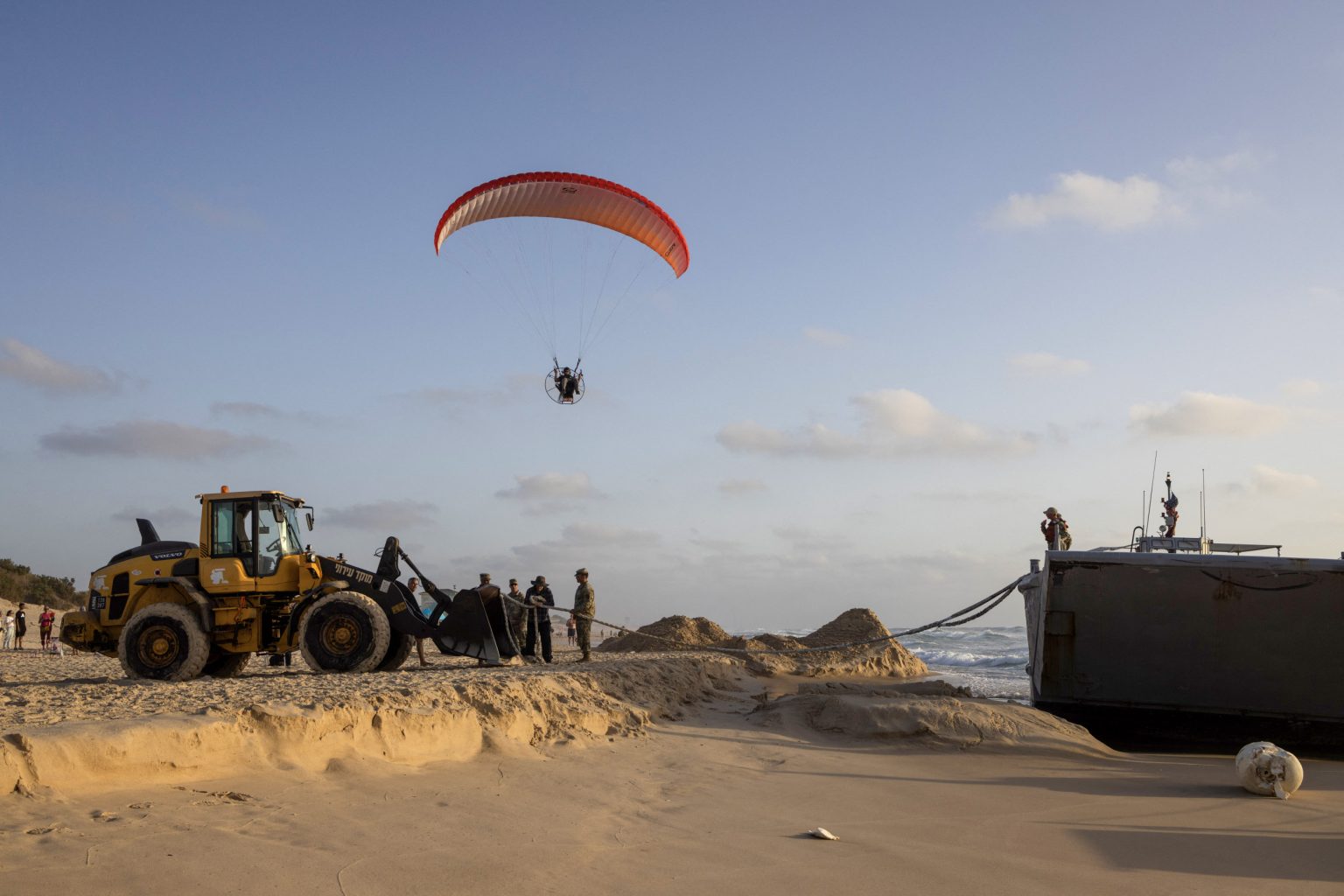President Joe Biden is facing backlash after a U.S.-built temporary pier on the shores of the Gaza Strip broke apart due to rough seas and weather. The $320 million pier had only been operational for two weeks, providing a lifeline for food and supplies to reach Palestinians amid the ongoing conflict between Israel and Hamas. The Pentagon announced that the pier will be removed for repairs in southern Israel, causing concerns about the lack of alternative routes for aid delivery to Gaza.
The setback was met with immediate criticism on social media, with many questioning why more efforts weren’t being made by the U.S. and Israel to reach Palestinians with humanitarian aid by land. Journalists and experts weighed in on the situation, highlighting the humiliation faced by Biden and the implications of relying on maritime aid delivery when land crossings could be utilized. The U.S. Department of Defense was contacted for further comment on the closure of the pier, underscoring the complexity and challenges of over-the-shore logistics operations.
The removal of the pier for repairs marks the latest setback for the Biden administration’s initiative to provide aid to Gaza. Over the past two weeks, three U.S. service members were injured and four vessels were beached due to heavy seas around the pier. Despite these challenges, more than 500 metric tons of aid were offloaded at the pier, with the majority in the process of reaching those in need. However, the United Nations estimates that a significant portion of the Gaza Strip population is on the brink of famine, underscoring the urgency of humanitarian assistance efforts.
President Biden announced the pier project in March to address the growing famine crisis in northern Gaza, highlighting the need for seaborne access for relief supplies. U.S. officials acknowledged that the pier alone cannot provide the necessary amount of aid to starving Gazans and that land routes remain crucial for humanitarian assistance delivery. The significant cost of the project, amounting to $320 million—double the original estimate—raised concerns among some lawmakers, who questioned the efficiency and effectiveness of the initiative in light of escalating expenses.
The involvement of 1,000 U.S. service members, primarily from the Army and Navy, in the construction and operation of the pier underscores the scale and complexity of the aid delivery effort. The challenges faced, including injuries to service members and vessels being beached, highlight the risks and obstacles involved in maritime logistics operations during conflict situations. The decision to halt humanitarian aid efforts via the damaged pier reflects the need for a comprehensive and sustainable approach to addressing the humanitarian crisis in Gaza, as calls for increased access and assistance continue to grow.


